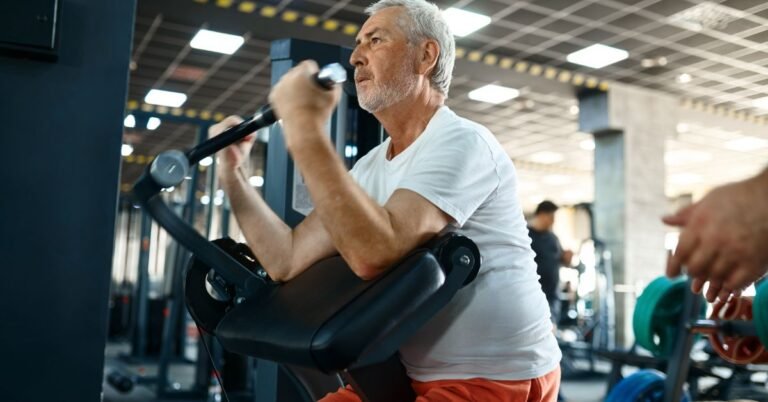We all want to live a long and happy life, right? While there are of course certain situations that can take this out of our control, according to the World Health Organisation ‘lifestyle choices’ are now the world’s biggest killer. Some of these ‘lifestyle choices’ are drastically more under our own individual control than others. One that most certainly is under our control is our activity levels.
Being physically active reduces your risk of all-cause mortality (death of any cause). A pretty big statement, but one backed up by a substantial amount of research. Being physically active, and reducing sedentary time, is one of the best ways we can ensure our longevity.
Over 6 decades of consistent research has demonstrated the health benefits of physical activity and the subsequent reduced risk of premature mortality.
Studies Show How To Live Longer & Healthier
One of the early studies investigating the associations of light, moderate and vigorous intensity physical activity with longevity was the Harvard Alumni Health Study. Just under 17,00 men, aged 35-74, were followed up for 12-16 years with self-reports of their walking, stair climbing and sports/ recreation activities.
Total physical activity was inversely related to mortality: a dose-response relationship was demonstrated between ‘total’ physical activity levels and death rates (mostly from cardiovascular and respiratory causes). This dose-response relationship was maintained even after accounting for confounding factors (such as hypertension, smoking, higher BMI) (1).
Subsequent studies have confirmed the same association in women, different ethnicities and low and middle income countries (2). The consistency of this dose-response relationship is clear, however what it doesn’t tell us is how much is too little, how much is enough and how much does the intensity of the activity matter?
The majority of these studies have also used self-reported physical activities, which obviously have the potential for bias and overestimation of physical activity levels. Highlighting a need for studies based on more objective markers of physical activity, which are now possible with the ever-increasing usage and accuracy of wearable technology to monitor such things.
A 2019 systematic review in the British Medical Journal aimed to examine the dose-response relationship between total physical activity, sedentary time, and intensity of physical activity assessed objectively – using accelerometery (3). The studies were undertaken in middle aged and older adults.
They found that total physical activity and all intensities of physical activity were associated with a lower risk of death. Sedentary time was associated with a higher risk of death. Importantly they found that any physical activity, regardless of intensity, was associated with a lower risk of mortality.
The participants were grouped in 4 categories based on their activity levels. When comparing the second least active group with the least active group, the risk of death was about 50% lower – the greatest reduction in mortality observed! This risk reduction was also seen for all intensities of physical activity – low, moderate and high. This highlights that even small increases in physical activity, of any intensity, substantially reduces the risk of premature death.
The maximum risk reduction for all-cause mortality was found to be about 60%, for moderate-vigorous physical activity performed for about 24 minutes per day. For light intensity activity, for the same maximum risk reduction, the activity had to be performed for about 375 minutes per day. So although even light forms of physical activity can lead to substantial reduction in risk of death, it needs to be performed for much longer periods.
A statistically higher risk of death was found in people who spend 9.5 hours or more inactive or sedentary per day. However, don’t be too disheartened if you have a job or lifestyle that requires you to be sat down all day. A recent meta-analysis looked at the combined associations of accelerometer measured physical activity and sedentary times on all-cause mortality (4).
Their analysis demonstrated that the association between being sedentary and risk of death was weakened by performing about 30-40 minutes of moderate-vigorous physical activity per day. So it is possible with regular moderate-vigorous exercise to counteract the negatives effects of a sedentary lifestyle.
Key Points For Living Longer
1) Any increase in total physical activity (regardless of intensity) is associated with reduced mortality
2) High levels of sedentary time is associated with a significantly increased risk of mortality
3) The biggest differences in mortality risk are seen between those who are extremely sedentary/inactive and who who are slightly more active – any activity at all can have substantial benefits
4) For maximum benefits moderate-vigorous intensity can be performed for much less time to achieve the same outcomes as many hours of low intensity activity
5) An estimated 30-40 minutes of daily moderate-vigorous intensity physical activity has shown to counteract the association between being very sedentary and mortality
Ultimately any and every activity matters. You can start small. Find what you enjoy. And keep going, keep moving and keep strong. If you’d like to learn more, we have a range of health and fitness resources for you to explore, whatever your current fitness level, to help you live a longer and healthier life.




